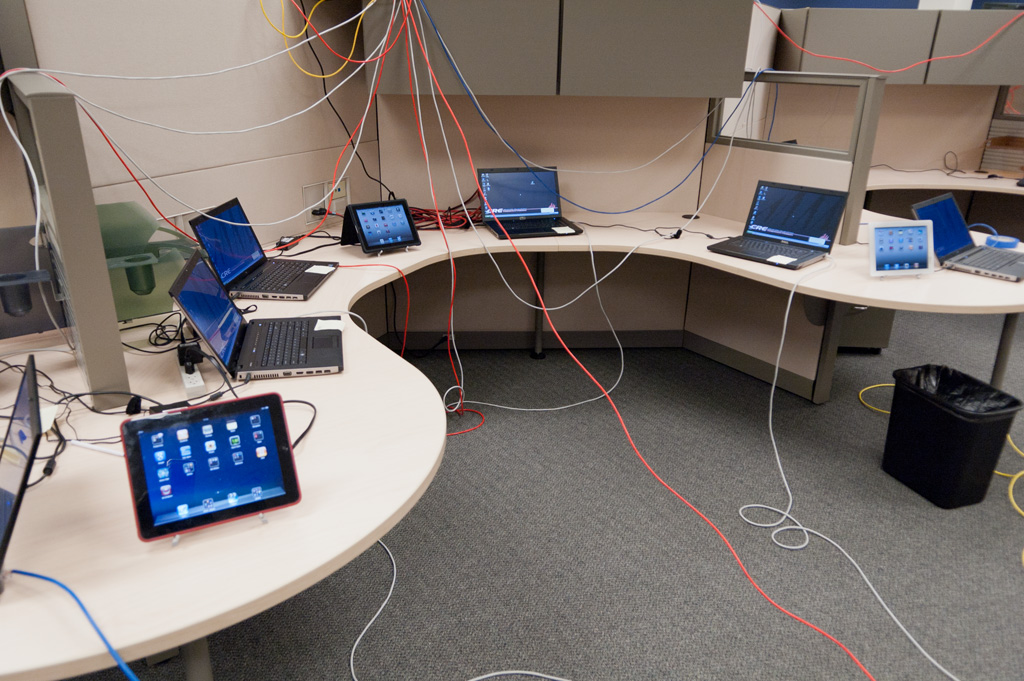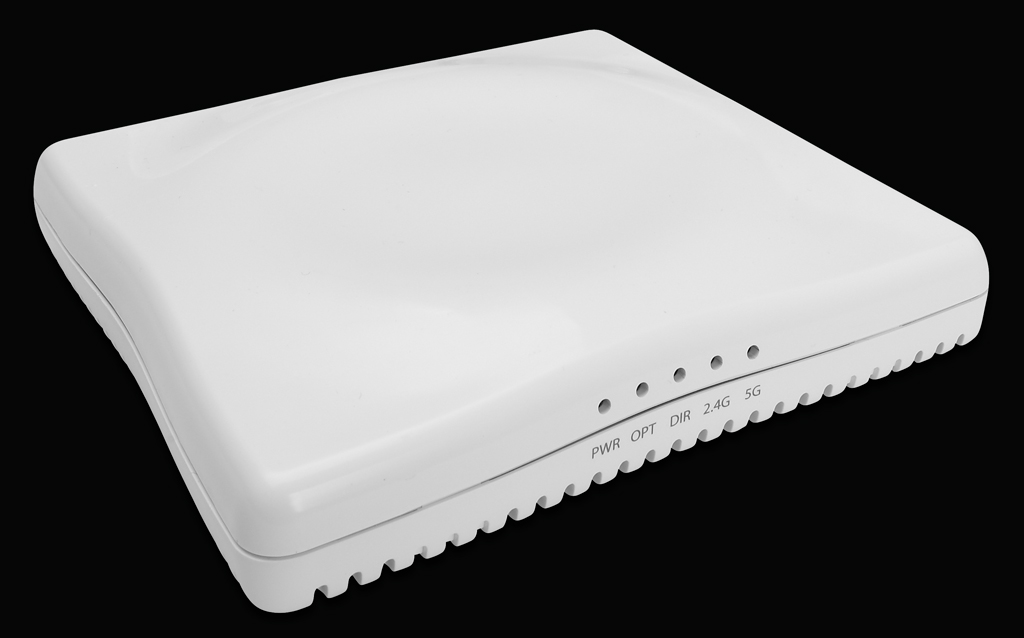Why Your Wi-Fi Sucks And How It Can Be Helped, Part 2
In Part 1, we explained what can go wrong with Wi-Fi signals and how access points can work to improve your wireless performance. It's time for a reality check. We throw six contenders against 65 clients and some hellish interference. Who's left standing?
Wrapping Up
Deep analysis like what we’ve done here—well over 300 test runs across a wide array of variable factors—is essential if buyers want any kind of true understanding about client performance. When it comes to total environment bandwidth, those big average Mb/s numbers you see in most router and access point reviews are not painting anything close to a complete picture.
In this two-part series, we sought to take a deeper look at performance by spotlighting the two primary environmental factors that weigh on Wi-Fi performance—interference and client load—and many of the technologies access points can use to combat those factors. In part because wireless interference is so difficult to control, most reviewers have never sought to tackle it in a real-world context. And certainly, our results shouldn’t be taken as fixed gospel. Someone could roughly duplicate our test setup and, because of fluctuating conditions, see different test results, if only through product tweaking. As stated earlier, we did no tweaking here—we only tested and reported. Had we started tweaking, we’d still be in that office recording throughput scores.
By now, the results should lead to their own inevitable conclusions. Apple makes a fine consumer router, but the difference between enterprise-class equipment and consumer gear here is glaring. This should be a red flag to power users placing an increasing number of Wi-Fi devices in their homes, as well as any business looking to save dollars by grabbing off-the-shelf gear at the nearest big retailer. The levels of engineering and component quality between the two product classes are worlds apart.
At the same time, there are obviously qualitative differences between enterprise access points. If you want performance under fire from ambient interference, Cisco and especially Ruckus are the two clear choices from our group. The same statement applies to airtime fairness and making sure that all clients get an approximately equal amount of bandwidth at any given time. When it comes to distance, you have to take a closer look at the environmental conditions and the specific attributes of your wireless devices.
In optimal, close-range, with little to no interference and only one client vying for the access point’s attention, the Meraki MR24 suddenly morphs into our top performer, most likely thanks to its three-stream design meshing well with our 3x3:3 Intel client adapter. Start adding distance and obstructions, and the situation changes. It also matters whether you want to emphasize downstream or upstream bandwidth from your AP. Aruba and HP are neither stunningly bad nor particularly impressive, but again—mileage may vary according to how you fine-tune the device.
Good Wi-Fi is not about brute force and raw speed. It’s about understanding RF and doing something about it. The products that outperformed in our testing weren’t the biggest and most expensive, or even the ones that used the highest number of streams. Ruckus puts forth the best effort in the largest number of tests, but it does so with a mere 2x2:2 design through engineering and deep attention to the factors necessary to provide a high-quality wireless experience in increasingly hostile RF conditions. From our group, Cisco is the only other vendor that seems to have provided even close to the same level of attention and control.
A Ruckus representative once mentioned to us in passing that his company had been in advanced talks with at least one panel manufacturer that was interested in putting the company’s antenna technology on a circuit board mounted behind the notebook’s LCD panel, built right into the lid. Can you imagine how performance might differ with both the client and access point using the same adaptive technologies? Sadly, the talks went nowhere because the vendor refused to pay Ruckus' asking price for the technology. Even in the consumer world, we know that Netgear once brought Ruckus tech to market in one of its 802.11g products, but this soon died out for similar reasons. People don’t understand the qualitative difference between wireless approaches. Instead they see Mb/s and access times, and that ends the discussion.
Get Tom's Hardware's best news and in-depth reviews, straight to your inbox.
It shouldn’t be this way. In the Wi-Fi arena, we’re facing a bandwidth dilemma not unlike the world’s impending oil shortage. As demand and usage continue to climb, our ability to effectively and efficiently use those resources will continue to diminish. Smart, adaptive antenna technology is not analogous to clean alternative energies, but it does provide a giant leap forward in how well we can utilize existing bandwidth resources.
Buy smart and, when possible, demand better from wireless manufacturers.
-
winner4455 Hey, I still haven't read this article but right away I notice the new format. Just thanking you for listening to your readers! :)Reply -
cangelini Very welcome Winner. We thought the picture story format would work for that last part and didn't realize the text would come out to be so terrible. From now on, we'll only use picture stories when the captions fit without requiring another click!Reply -
tacoslave cangeliniVery welcome Winner. We thought the picture story format would work for that last part and didn't realize the text would come out to be so terrible. From now on, we'll only use picture stories when the captions fit without requiring another click!"Now thats what i like to hear!"Reply -
nekromobo What if you add few thin-foil balls to room (the size of fist or 2)Reply
That should add few rf-reflections or paths, right?
Just your 2cent amplifier.. :) -
I wonder why you didn't include Juniper products (formerly trapeze)to this test. It's quit a big player here in europe. Trapeze also produced the 3com wireless manager and accesspoints which was sold widely here.Reply
-
Hupiscratch In the page "Benchmark Results: Close Range, No Interference", the HP AP is missing on the downlink graph.Reply -
Onus This was an outstanding article. Going just by this, Ruckus and Cisco are the only two I'd consider out of the box, but it would be very interesting to do a follow on that features even a minimal amount of tweaking to see what changes. A consumer expects a product to work well out of the box, but an enterprise network engineer almost certainly does not.Reply
-
Very thorough. Lots of hard work went into this and it shows. But how did you select client devices? Did you try any other chipsets? We tried something like this with more diverse clients and got results that were too variable to reach conclusions. (Some clients just did better with some APs than others.)Reply

